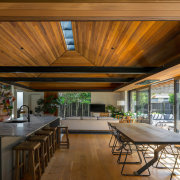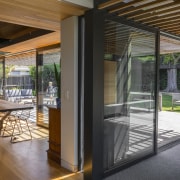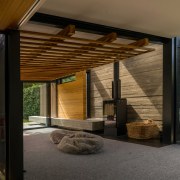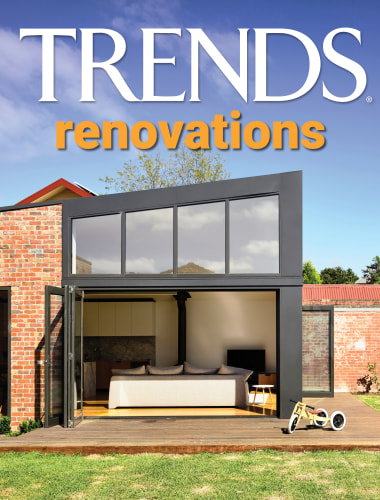Bringing nature inside
This renovation honours the home's heritage credentials while developing connections to the outdoors via skeletal structures and a garden room
Renovation by Wulf Borrmeister, Borrmeister Architects
The owners
Owner Ben Calvin says he and his wife took a big chance on this 1899 listed brick villa in Christchurch.
It was uninhabitable, damaged in the earthquake and stripped out ready to demolish.
“We bought it as-is, where-is. It was uninsured and we couldn’t even live in it," he says
“The day we bought it, I sat down in a seat, looked around and thought, ‘Oh, no! Now I have to do it’.”
Calvin, who owns his own building company, and wife Lauren Keir wanted to open it at the rear to create light-filled living areas and a connection with the garden, making it the perfect home for their young family.
Undeterred by the size of the project and the home’s historic listed status, the pair called in architect Wulf Borrmeister of Borrmeister Architects to create a renovation that was sympathetic to the home’s history but freshened up for modern living.
Having already done one villa renovation, Calvin says: “I liked the challenge of it – and it was a challenge! There was no insurance, nothing in place. But I loved the opportunity to develop out the back.”
Heritage listed project
In 1985 the villa was listed with the Historic Places Trust (now Heritage New Zealand) with a Category B rating and in 1995 it was given a Group 3 listing with the Christchurch City Plan.
As per a heritage report that had been commissioned earlier, “41 Ranfurly street is one of a pair of similar but non-identical brick villas built on adjacent sites to showcase the exemplary design and construction standards offered by the very first original owners- the Soanes brothers.” (Master Builders and Bricklayers.)
In 1899 they bought the site and “…built a pair of houses that demonstrated their professional skill. The houses were set apart because of their construction and detailing. The villa is a triple brick return bay villa with plastered details and corrugated steel roof.”
The existing 1899-built villa had been previously altered with a mid-2000s addition.
In careful consideration of the existing heritage, the idea of the ‘garden’ structure for the new alteration and additions grew from the appreciation of the existing gardens, as well as to not compete with the existing heritage architecture – instead complementing it with light skeletal floating structures.
The brief
The brief called for minor internal alterations and refurbishment to the existing home and a completely new addition consisting of a sitting / ‘garden room’, laundry, guest WC, and storage room to accommodate a growing young family.
A key vision for the addition and alterations was to further develop the connection of the house to the surrounding gardens and northern outdoor living.
Natural, durable, robust materials that would age gracefully without a high degree of maintenance were chosen.
Use of raw materials in the garden room and the soaring extension of timber and concrete structures from inside to out serve to enhance and honour the garden connection.
A consistent architectural language throughout seeks to blur boundaries and bring nature inside.
Timber fins, battens, the floating pergola, and picture windows frame garden views and guide the eye outside.
Treatment of light and shadow alongside the use of raw textures and materials is carefully considered.
The existing living area light well is further enhanced by the addition of rich dark timbers to the ceiling – a change from the original white.
In addition, a new light well in the garden room highlights the raw texture of the timber faced concrete wall below.
The transitional nature of daylight casts playful geometrical shadows through the pergola and batten structure while the ever-changing light is invited into the house at room transitions through stepped and glazed facades – creating a calming and natural environment.
Sustainable and environmental considerations
- Preservation and maintenance of existing villa and architecture – reuse rather than replace.
- Solar orientation and consideration of the existing landscape and gardens around the existing house informed the placement and layout of the new addition and alterations.
- The existing house was upgraded thermally, and efficient heat and cooling systems were installed.
- The house has now been pre-wired for future solar power.
Home kitchen bathroom commercial design
Diving into nature
Classic looks, contemporary efficiency
Personality plus
Renovations
Renovating your home is an opportunity to refresh, expand and renew. Here's all the inspiration, ideas and information y...
Read More


















